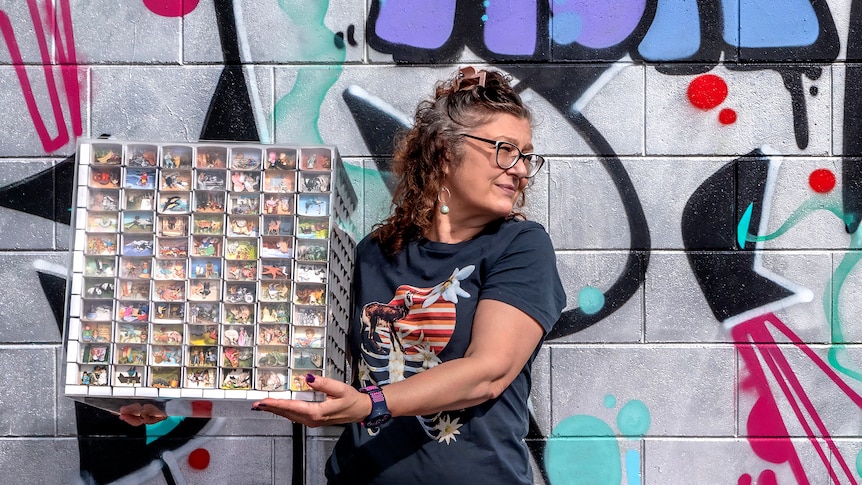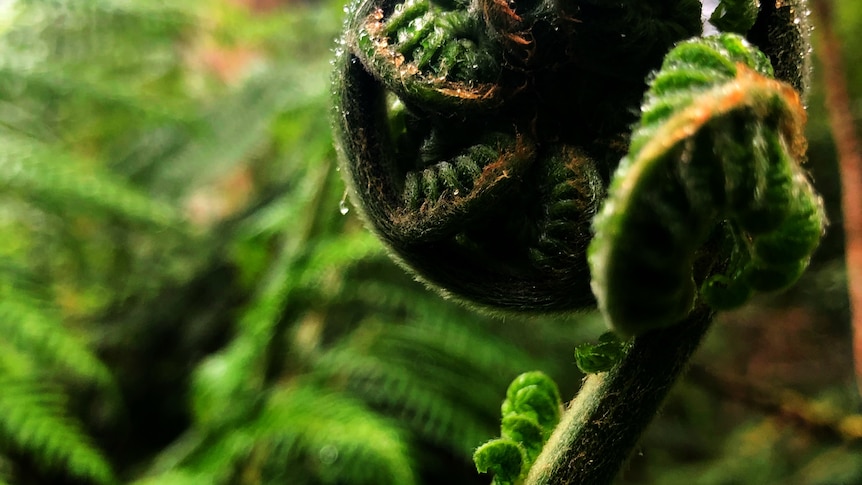A south-east Queensland artist has been hunting for matchboxes — but the only fire she is interested in lighting is a creative spark.
Sharks leaping into a waterspout, penguins mingling with nuns and a space shuttle gliding over the Sydney Opera House show some of the stories inside Marlies Oakley’s mind.
The German-born Bundaberg woman creates miniature stories inside matchboxes using a cut and paste collage technique, then joins the boxes together to create large voyeuristic artworks.
“Every matchbox is different,” Ms Oakley said.
“They consist of a background, with a few other elements within the matchbox for a 3D format. All collage and hand cut.”
Ms Oakley began working with collage after her home and business were devastated by the 2013 Bundaberg floods.
Her early works involved cutting postage stamps to create large-scale portraits and the process helped calm her mind.
Working with matchboxes was triggered by a more recent stress — COVID-19 lockdowns.
“A couple of years ago, I got a big box of matches at the Tender Centre,” Ms Oakley said.
“I forgot about them, but then I opened them up during COVID lockdown and I thought, ‘Oh, what can I do with them?’ and I started to collage them.”
Each matchbox contains its own “weird” or “quirky” tiny tale and when linked they represent the common feelings of isolation and disconnection during lockdowns.
“They are all their own stories because during COVID we have all got sort of inside our own homes and cocoons and nobody went out,” she said.
“We started to think inside our own box.
“I love them all, I just giggle when I see them.”
Matchboxes strike interest
The artworks have captured the attention of galleries, with Ms Oakley claiming several art prizes for her works including the prestigious Martin Hanson Memorial Art Award and ‘Highly Commended’ Lethbridge Gallery Small Art Award, two years in a row.
Her 2022 entry ‘Thinking Inside the Box (cubed)’ is 462 matchbox stories linked to form a cube.
The cube took Ms Oakley about a week to create, in a process she describes as a “memory game” where she surrounded herself with images she had cut.
Creating the stories is a mindful practice for Ms Oakley but it is cutting the small images from op-shop books and magazines that has been the most helpful in calming her mind.
“For hours I’m just cutting things out,” Ms Oakley said.
“Even if I don’t glue in a day, every night, even in front of the telly, I’m cutting things out — it’s part of my life now.
“I had a holiday for three weeks and I didn’t do it and at the end I thought, ‘I need it, I miss it’. I go into my own little world and cut and glue.”
An expensive venture
Sourcing the matchboxes is one of the only downsides of Ms Oakley’s creations, with many shops no longer stocking them.
And they are not cheap.
“It’s quite expensive to find the old matchboxes,” Ms Oakley said.
“But I found a really good supply at a major hardware store — I don’t know if they use them for barbecues or whatever, but you can still find them.”
She removes the matches and places them into a large jar, which she may use in an artwork in the future.
Ms Oakley’s artwork ‘Thinking Inside the Box (cubed)’ is currently on display the Bundaberg Regional Art Gallery as part of the HERE + now 2022 exhibition, which runs until November 13.
.

